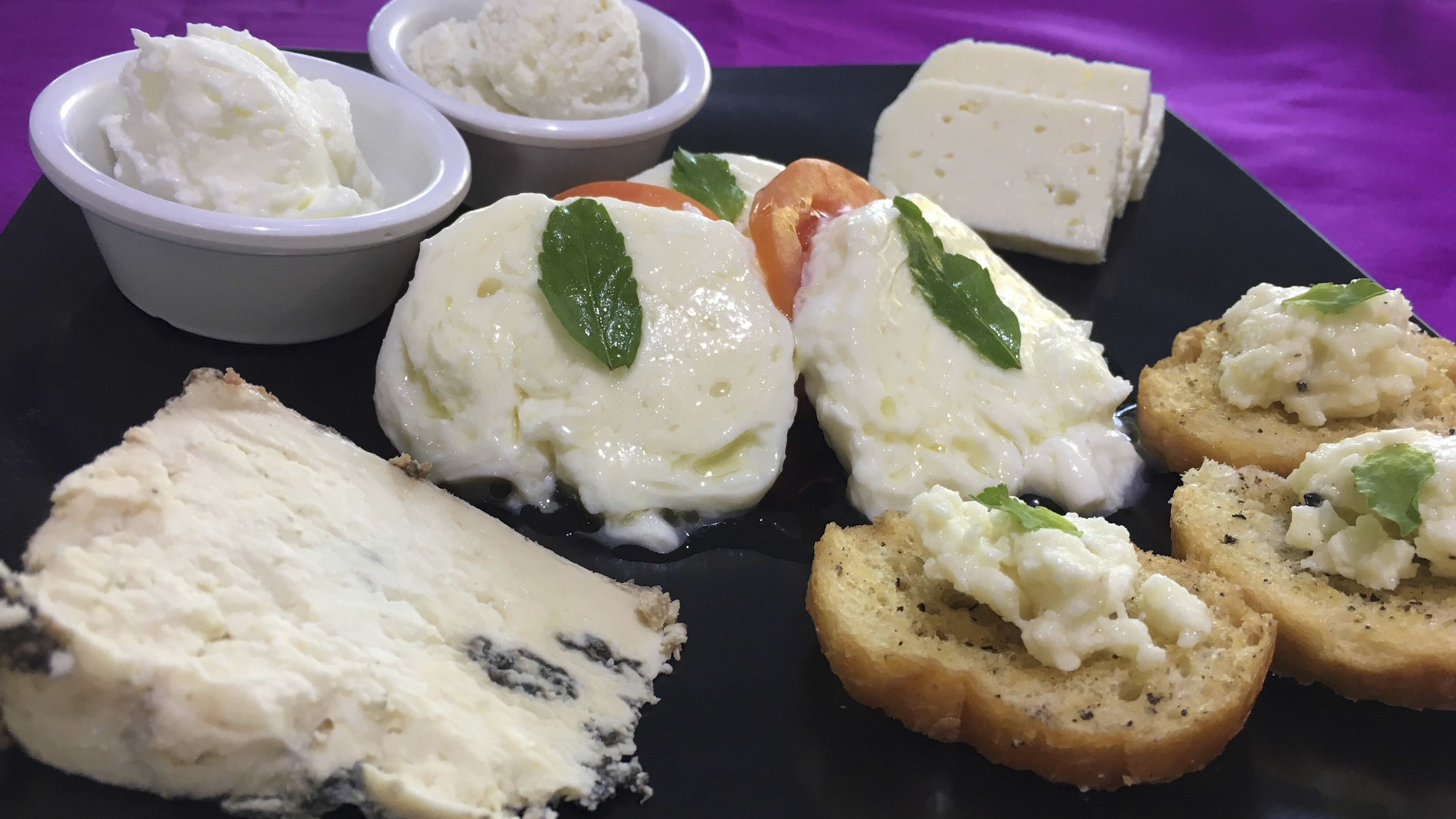We’ve all heard of buffalo mozzarella. But in one popular Southeast Asia destination, a farm is offering travelers a chance to sample a wide variety of cheeses using milk from local buffalos instead of cows.
Laos Buffalo Dairy, in the UNESCO-listed heritage town of Luang Prabang, is the country’s first dairy and buffalo farm. And it was actually the byproduct of a midlife crisis.
Australian CEO Susie Martin and her husband, farm GM Steven McWhirter, originally came to Laos from Singapore to run a guest house for a year.
“When we tried to buy buffalo milk to make the delicious yogurt we had seen in Sri Lanka to use at the guesthouse, no one had any idea what we were talking about,” recalls Martin. “Seeing that there was also growing demand from hotels and restaurants for dairy products such as mozzarella, we set up the dairy in 2017.”
Using the logic from her time in commercial real estate, she thought, “If you can rent an office space, you can rent a buffalo.” Thus the social enterprise concept of the dairy was born, and as a sign at the farm says, “This is our midlife crisis with a purpose instead of a Porsche.”
How the dairy works
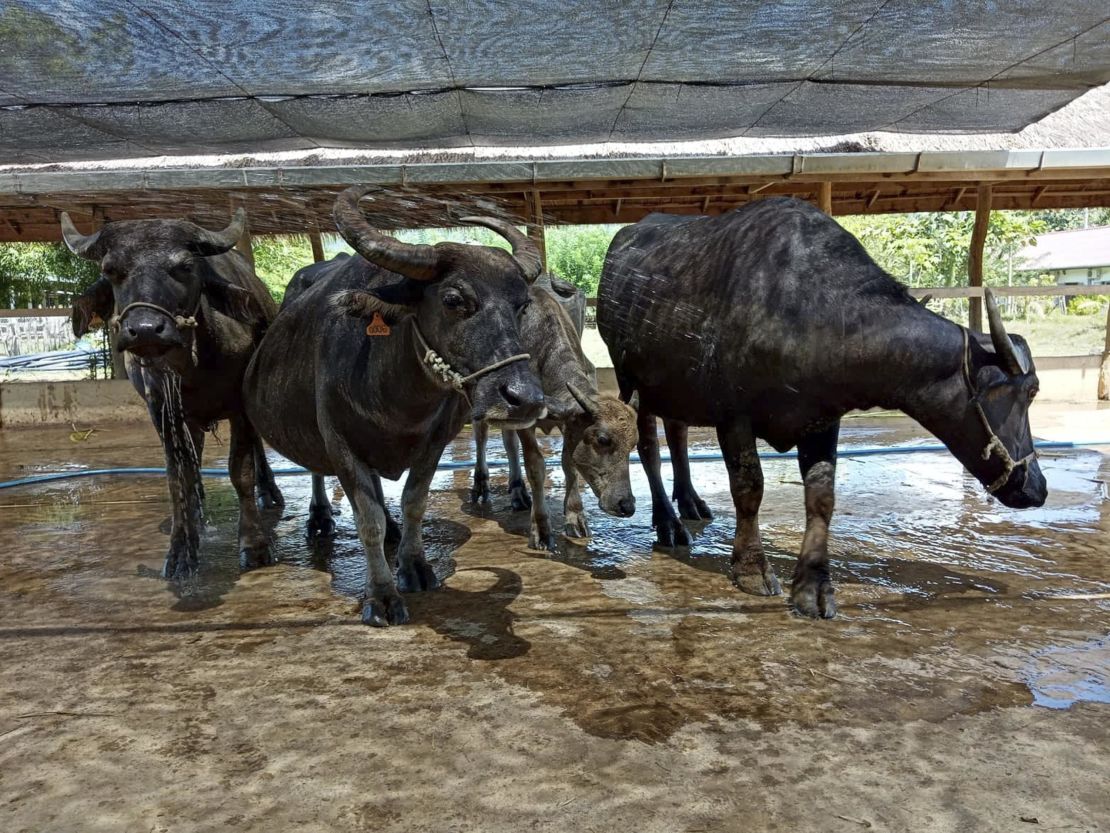
Villagers around Luang Prabang travel up to two hours to bring their pregnant buffalo to the farm.
“The buffalo arrive when they are eight months pregnant (gestation is 10 months),” says Rachel O’Shea, executive chef and GM of production at the Laos Buffalo Dairy.
Once on the farm, the buffalo is quarantined, tested for diseases, vaccinated and trained for milking. After the calf is born, its mother isn’t milked for the first three weeks so that the baby can solely benefit from its nutrients. Then, they milk the mother only once in the morning, leaving the rest for the calf.
“At the end of the rental time, the farmer is paid a lump sum depending on how many days the buffalo milks, approximately $100 per buffalo (the average monthly salary in Laos is $120 per month.),” says O’Shea.
Both the buffalo and the calf go back home with the farmer until the animal is once again eight months pregnant, then the process at the dairy starts over again.
Happier and healthier buffalo
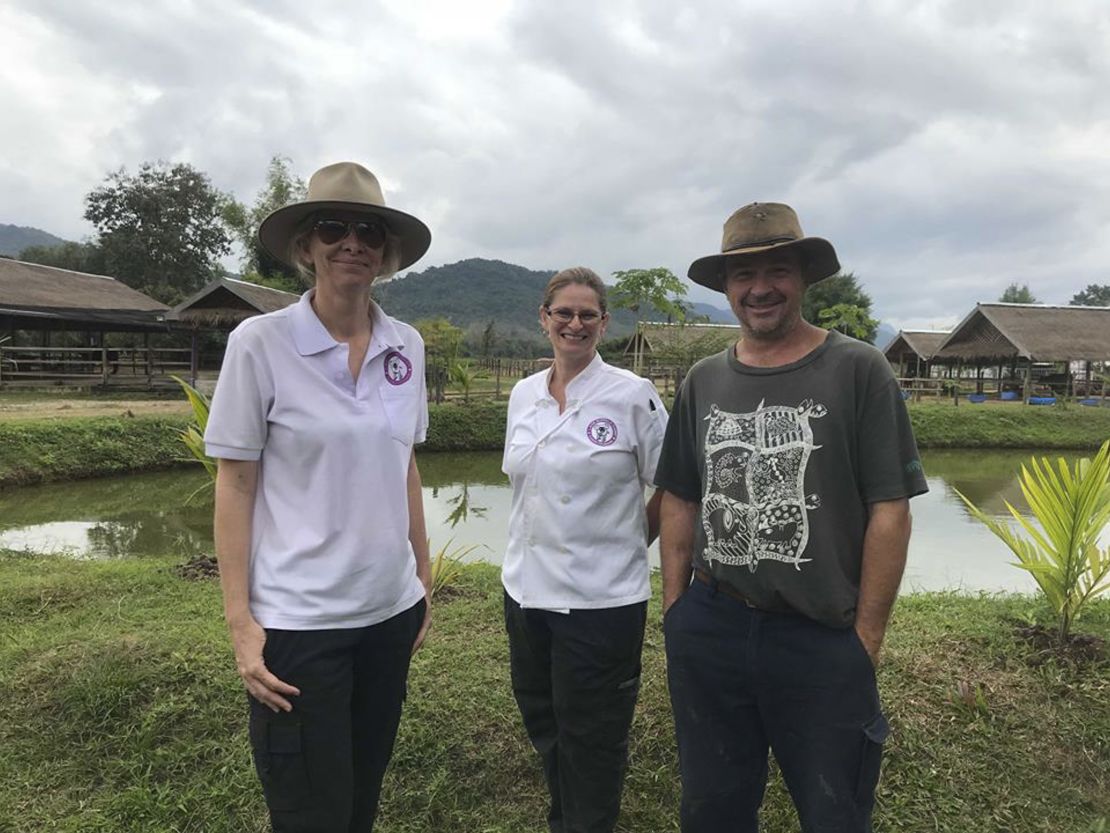
Traditionally, buffalo were used for plowing rice fields in Laos. But as the use of tractors became more widespread, buffalo owners began selling their animals to fund their children’s school fees, pay medical bills or even finance weddings.
“They are literally a ‘Buffalo Bank’ with a value of roughly $1,000, representing 50% of a farmer’s annual income,” says Martin.
But as farmers sold more males, inbreeding of buffalo took over, and a less fertile, less healthy breed of buffalo became common. The Laos Buffalo Dairy’s breeding program aims to tackle that issue.
“Approved by the Laos government, we use different bulls with the females from the various villages providing healthier offspring. These healthier offspring then return to the villages with their mothers,” says Martin.
What the locals thought
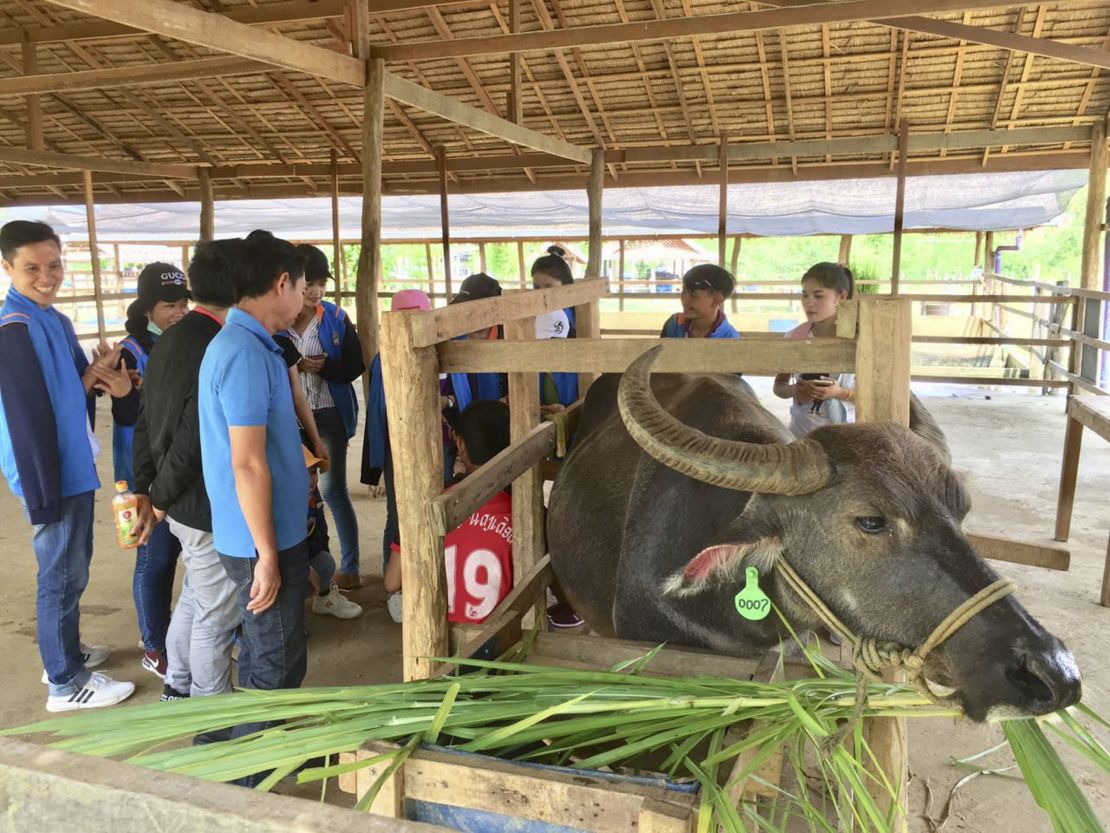
When the Laos Buffalo Dairy team first introduced their program to area farmers, it took roughly 18 months to convince them that it was a win-win idea.
“Originally, they thought we were going to ‘barbecue their buffalo’ because what we were offering them seemed too good to be true – that we’d take care of their buffalo by vaccinating it, feeding it, helping the calf once it was born, pay for the milk she produces AND hopefully send it back pregnant with better genetics on board, at no expense to them,” says O’Shea.
Today, they have 85 buffalo on the farm and hope to increase the number to 150 in 2024.
“Now we get random calls from farmers asking us to take their buffalo in,” says O’Shea.
“Sometimes when we ask how pregnant she is, they say ‘Oh, it’s a boy.’ To which we have to respond, ‘Sorry! We don’t take boys.’”
And while demand is high now, funding was another difficulty the dairy faced.
“No one wanted to support us as they all thought we were crazy,” says Martin. “So we sold our houses in Australia and the US and used those funds to start it.”
Lemongrass ice cream and buffalo brie
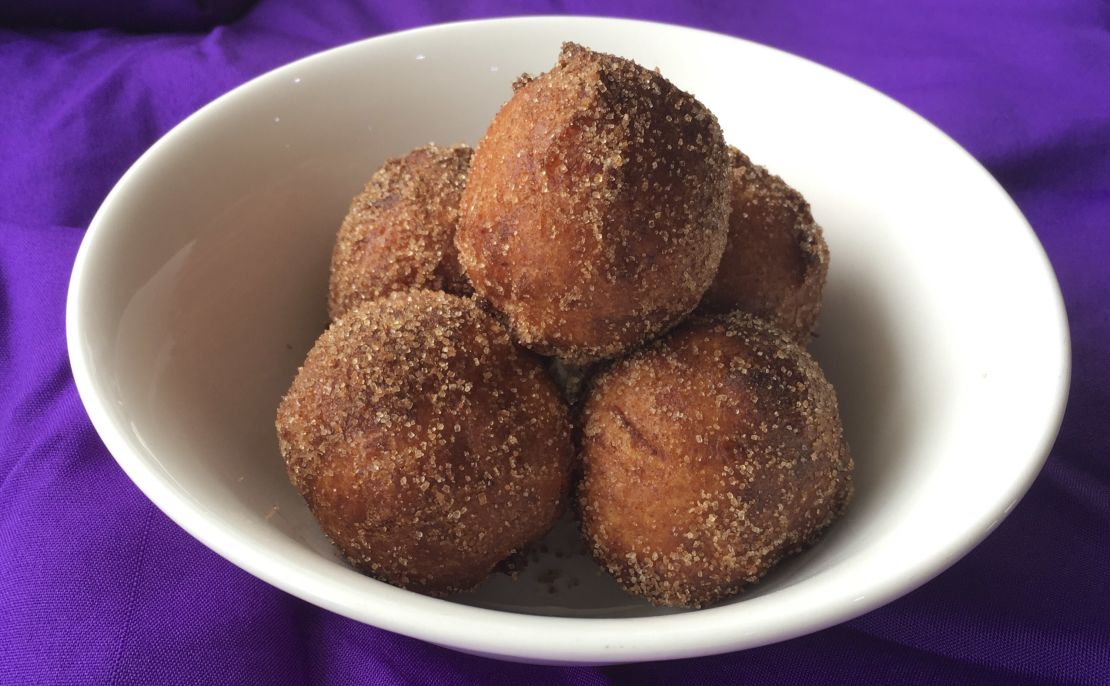
With the milk collected from the buffalo, O’Shea and her team create one of Laos’ rarest products – cheese.
At the farm, tourists staying in Luang Prabang can stop by from 9 a.m. to 5 p.m. and try their creations, from a caprese salad to pumpkin pie ice cream. They also offer guided tours and plan to introduce a wine and cheese tour in the future.
For now, the menu includes bocconcini, ricotta, blue cheese, feta, burrata (by request), yogurt and their most popular type of cheese, mozzarella. They’re working on adding brie, parmesan, cheddar and, hopefully, goat cheese.
As for ice cream, they’re hoping to partner with Laos’ first cocoa producer, Chocolate Dream, to create a cookie dough flavor.
Guests at hotels in nearby Luang Prabang, like La Résidence Phou Vao, A Belmond Hotel, and soon, Avani+ Luang Prabang and Rosewood Luang Prabang, can also try Laos Dairy Farm’s cheese at the breakfast buffet and in the hotel restaurants.
“The more hotels and restaurants that purchase from us, the more tourists that come to the farm and try our products, then the more farmers we can work with in order to get buffalo we can milk,” says O’Shea.
More than buffalo
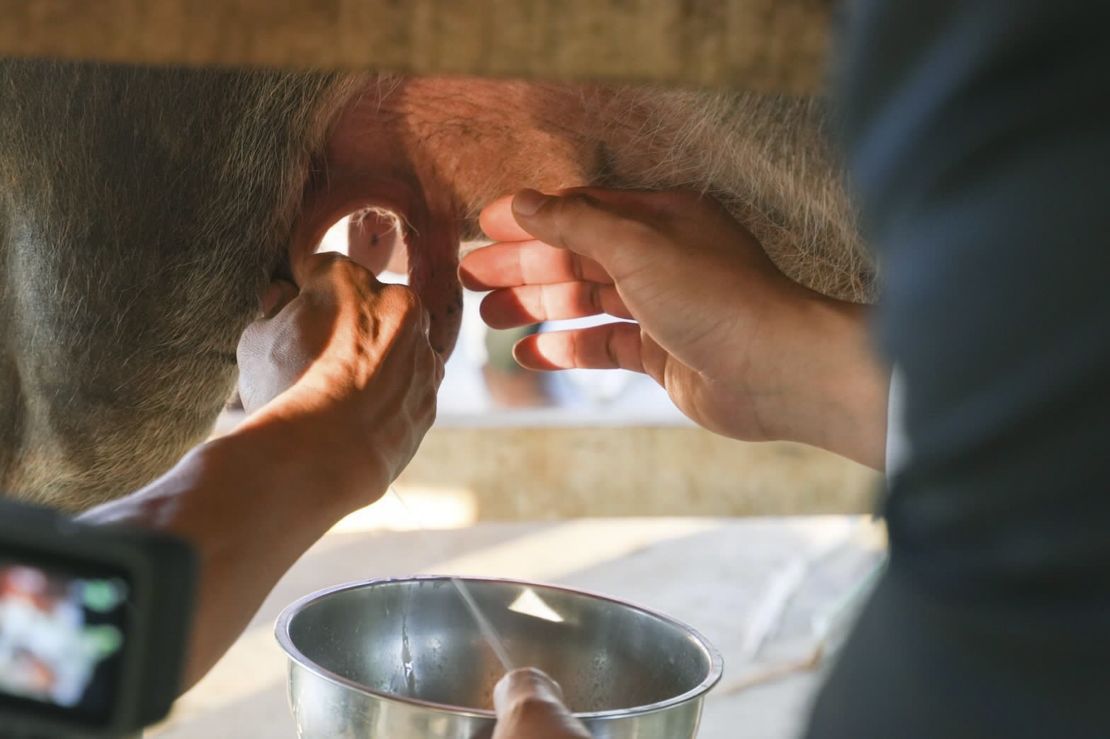
When arriving at the farm, travelers will probably hear pig squeals before buffalo bells. Both pigs and rabbits are used in one of Laos Buffalo Diary’s other local programs –animal husbandry, a term that refers to the science of breeding and caring for farm animals.
To teach this, they use materials farmers can easily get their hands on to replicate in their villages.
“Some of these structures, like our pig pen, use materials that are byproducts of the harvest that farmers would normally burn like rice husk, harming the environment,” says O’Shea. “Instead, we use them as bedding for happier, healthier pigs and use it as a natural fertilizer after three to four months.”
Another major focus at the farm is malnutrition.
According to the World Bank, close to 35% of Lao children are malnourished. Feeding babies and infants buffalo milk is an easy and sustainable source of nutrients that many farmers already have access to.
Over the past five years, the team at Laos Buffalo Dairy has started three motherhood and child nutrition programs, all designed to help mothers increase their child’s nutrients in the first 1,000 days. The’ve even created a free recipe book for locals that offers suggestions on how to incorporate buffalo milk into traditional Laotian dishes.
Since its inception, the program has expanded to include goats (another first in Laos) and is now also being offered in neighboring Cambodia.
The dairy farm also plans to reintroduce free English classes to its 40 Laotian team members and children from local schools, a program that was put on pause during the Covid pandemic.
While the global shutdown hit the farm hard, things have improved since the border reopened last year.
“Our goal has always been to be environmentally friendly, which is why we use local buffalo rather than imported cows, and by not creating our own dairy herd but renting animals already being raised in the villages,” says Martin.
“As tourism recovers and increases after Covid, the more people we will be able to help.”
